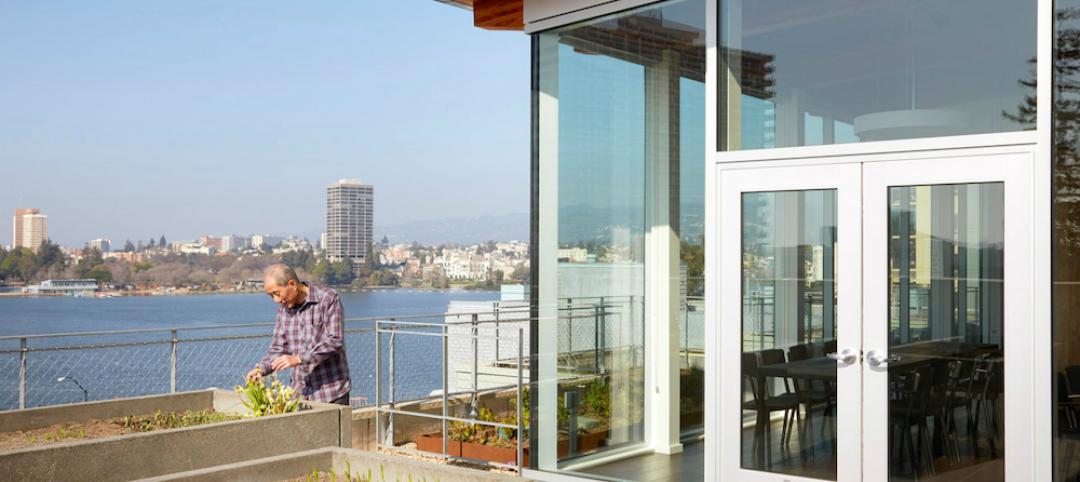Representatives from the architectural regulatory authorities of United States, Canada, and Mexico have announced a major agreement to mutually recognize architect credentials in the three countries, making it possible for architects to work across North American borders.
The National Council of Architectural Registration Boards (NCARB) in the United States, in conjunction with the Canadian Architectural Licensing Authorities (CALA) and the Federacion de Colegios de Arquitectos de la Republica Mexicana (FCARM), announced the final implementation of the Tri-National Mutual Recognition Agreement for the International Practice of Architecture among the United States, Canada, and Mexico.
The agreement represents over a decade of negotiations, bringing cross-border recognition of professional credentials from concept to reality in the spirit of the North American Free Trade Agreement (NAFTA). Qualified architects, from each country, who satisfy the requirements of the agreement, will be granted a credential that will lead to a license to practice architecture in the host country.
Informally known as the Tri-National Agreement, the pact outlines specific requirements that architects must satisfy when pursuing mutual recognition. These include education and work qualifications, as well as submitting documentation to confirm the individual’s credentials. A few of the basic eligibility requirements include:
• Completion of a professional degree in architecture from a program accredited by the National Architectural Accrediting Board (NAAB), the Canadian Architectural Certification Board (CACB/CCCA), Acreditadora Nacional de Programas de Arquitectura y Disciplinas del Espacio Habitable (ANPADEH), or recognized equivalent.
• A minimum of 10 years of post-licensure experience in the architect’s home jurisdiction.
• Proof of “Good Standing” in the home jurisdiction, as verified by the local regulatory authority.
• Knowledge of the codes, laws, and other matters applicable to the practice of architecture in the host country.
• Submission of a dossier of work to satisfy the specific competencies outlined in the agreement related to “responsible control and comprehensive practice.”
• Completion of an interview before a review panel in the host country, conducted in the language of the host country.
The agreement, along with similar programs, opens doors to qualified architects as the world and architectural practices become more globally connected. Architects interested in pursuing the opportunity for licensure outside of their home country should review the eligibility requirements and program information in greater detail as posted on the NCARB website. Additional details and standard application forms can be obtained by contacting the regulatory authority in the architect’s home country.
The path to the Tri-National Agreement has its origins in the passage of NAFTA in 1994, which spurred a discussion between leaders and regulators of the architecture profession in the United State, Canada, and Mexico to consider ways to facilitate the mutual recognition of licensure credentials among all three countries.
The initial agreement, signed in 2005 by the leaders of the profession in all three countries, marked what many considered to be one of the first professional services recognition programs under NAFTA. The study of the path to licensure in each country, the subsequent negotiations, the pilot program, and the final mechanisms for implementation continued over the following years, with support from volunteer leaders and staff from all three countries’ licensing authorities.
Throughout the process, the underlying goal has been to remove barriers and provide qualified architects the opportunity to offer professional services across borders while ensuring the protection of the public health, safety, and welfare. The agreement applies to architects from the United States, Canada, or Mexico who have not used other mutual recognition agreements for initial licensure in their home country.
Related Stories
Healthcare Facilities | Jul 20, 2016
Process mapping simplifies healthcare design
Charting procedures and highlighting improvement opportunities can lead to developing effective design strategy simulations. GS&P’s Ray Wong writes that process mapping adds value to a project and bolsters team and stakeholder collaboration.
Architects | Jul 20, 2016
AIA: Architecture Billings Index remains on solid footing
The June ABI score was down from May, but the figure was positive for the fifth consecutive month.
| Jul 19, 2016
2016 GIANTS 300 REPORT: Ranking the nation's largest architecture, engineering, and construction firms
Now in its 40th year, BD+C’s annual Giants 300 report ranks AEC firms by discipline and across more than 20 building sectors and specialty services.
Architects | Jul 18, 2016
17 buildings designed by Le Corbusier added to UNESCO World Heritage List
The sites are spread across seven counties and were built over the course of 50 years. Le Corbusier, an architect, designer, and urban planner, was a founder of modern architecture.
Multifamily Housing | Jul 18, 2016
Four residential projects named winners of the 2016 AIA/HUD Secretary Awards
Affordable housing, specialized housing, and accessible housing projects were honored.
Sports and Recreational Facilities | Jul 18, 2016
Turner and AECOM will build the Los Angeles Rams’ new multi-billion dollar stadium project
The 70,000-seat stadium will be ready by the 2019 NFL season. The surrounding mixed-use development includes space for retail, hotels, and public parks.
High-rise Construction | Jul 15, 2016
Zaha Hadid designs geometric flower-shaped tower for sustainable Qatar city
The 38-story building will have a mashrabiya latticed facade with hotel and residential space inside.
Building Team | Jul 11, 2016
Design-assist: The way to really fly [AIA course]
Experts explain the benefits of DA, a process where the subcontractors are retained to assist other Building Team members in the development of a design. Earn 1.0 AIA CES learning units by reading and taking the exam.
Building Team | Jul 11, 2016
Addressing client concerns about design-assist
Common concerns about DA include lack of familiarity, obtaining competitive pricing, and design liability.
Sponsored | Building Team | Jul 11, 2016
Construction Disruption at AECX: Technology, hackathons and the promise of change in LA
The lead up to AECX featured a discussion providing insight into the current state of the AEC technological revolution by exploring opportunities, challenges and choices AEC pros face.
















